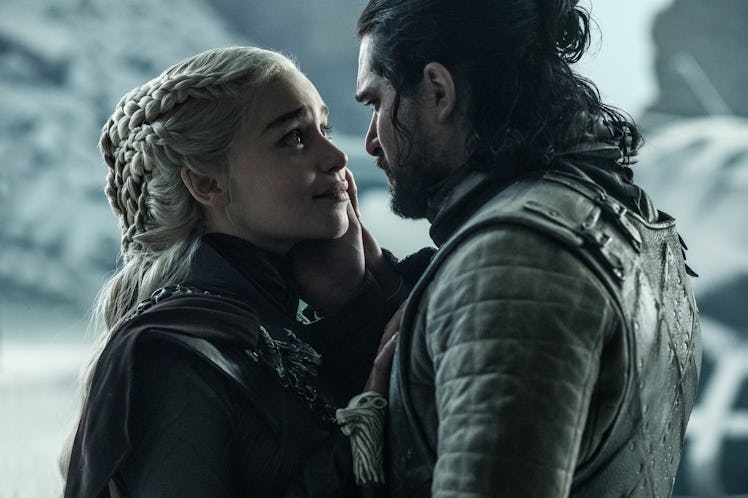
These Details About *That* Jon & Dany Scene In 'GOT' Will Give You A New Perspective
The Game of Thrones series finale was controversial among fans, to say the least. It makes sense. With such a widely popular show and a fanbase that is prone to dissect each and every detail, there were bound to be a spectrum of opinions about how the series came to a close. But no matter what your opinions are, there's one thing that is undeniable: The sound design of Game of Thrones is pretty much perfect. Sound is an element of TV that often goes unnoticed, but it's integral to any good show. Tim Kimmel, the Game of Thrones sound editor, reveals hidden details that went into Season 8, including all the decisions that went into the final scene between Jon and Daenerys.
Kimmel was the supervising sound editor of Game of Thrones, which can be a mysterious-sounding job title to those who are unfamiliar with the auditory side of filmmaking. Kimmel explains that basically his job was to oversee all of the sound, including everything from dialogue to dragon roars, and make sure that each piece fits together into the whole of the soundtrack. A big part of that job is figuring out which sounds are most important for the audience to hear.
"We’re covering pretty much anything you’re seeing so that we have sound for it, and then as we go through it we start to figure out what serves the story the best," Kimmel explains to Elite Daily. "You might see 10 things happening on screen, but one of them is the important story with the main character. If we see the main guy battling, we need to hear what’s going on with him or her."
One of the most important moments of the Game of Thrones series finale was conveyed entirely through sound. In the final scene between Jon and Daenerys, he embraces her and it seems like a sweet moment, until the audience hears the sound of a knife stabbing flesh. The audience hears Jon kill Daenerys before they see it, which builds the anticipation and shock of the game-changing move. It's a moment that exemplifies the power of sound in filmmaking, and it's also a moment that Kimmel and his team spent a lot of time working to get right.
"You need to know that it’s happening and you need to feel that it’s happening but we didn’t want to hit the viewer over the head with it," Kimmel says. "So it needed to be one of those 'Wait, what just happened?' kind of moments. So we went back and forth where it’s a longer sounding stab, it’s a shorter sounding stab. And where we ended up we were happy because it feels right and it feels like it makes sense."
Kimmel points out that he and his team had a lot of specific sound design decisions to make over the course of Game of Thrones Season 8. In particular, the final season's battle sequences brought on new challenges. Kimmel's team had to convey the constant sense of the city crumbling in the Battle for King's Landing, and they created brand new vocal styles for the wights in the Battle of Winterfell.
"We had to come up with hundreds of different vocals for these things [the wights] so that the sound of them as a gang together as a huge army worked," Kimmel explains. "But then there’s the sound of each individual one when you get close to and it’s attacking."
It's the nuanced details like the sound of the wights that add texture to Game of Thrones and make the world come alive.
"We definitely try to use sound as a storytelling tool as much as we can," Kimmel says. "Some of our job seems to be just finding something cool and going with it, but really in the end you’ve got to focus on story. It might be a cool sound, but it doesn’t tell us what it needs to tell us. That’s one of the harder parts of the job is finding the right sound for the story and really helping to tell that."
Game of Thrones is over now, but fans' debate and analysis about it will most likely never end. At least these extra details about the sound design of the series add some more for fans to pick up on during their Game of Thrones rewatches.